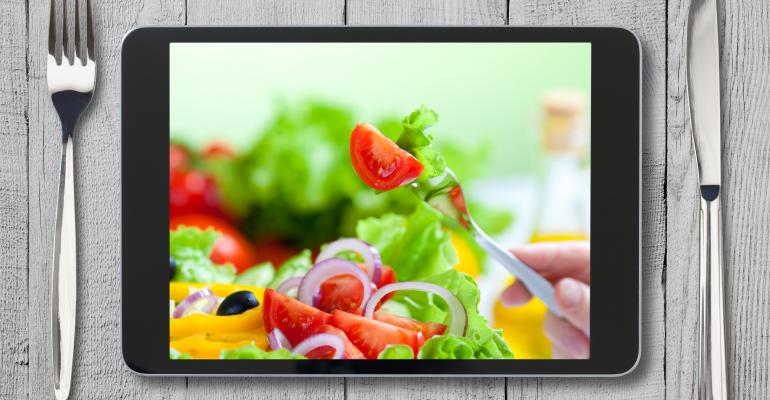Sponsored by QU
Let’s face it, there are more POS systems on the market than anyone cares to count. But when it comes to Enterprise Cloud POS with true omni-channel management, your options are very limited.
The truth is, POS vendors have completely failed enterprise operators when it comes to efficiently scaling their business in an increasingly digital world.
The proliferation of self-order channels, third-party delivery, and ghost kitchens in recent years created many more complexities for operators seeking to increase revenues, while taking advantage of all these new consumer entry points.
A snapshot of recent POS evolution (post-Cash Till) looks like this:
- Legacy POS (1980-2005). The first electronic POS registers with computerized systems were built to manage restaurant payments and orders at the local store level using a client-server model.
- First-Gen Cloud POS (2005-2019). Digital order channels created the birth of early cloud POS. Fragmentation of menus and data ensued.The first-gen cloud overlooked in-store resilience and stability for “Internet down” scenarios.
- Next-Gen Cloud POS. The next wave of POS evolution goes beyond simple cloud capabilities into a more unified and proactive approach for enterprise restaurant management.
Next-Gen POS Defined
The next generation of enterprise POS must go beyond the static “point” of sale approach developed by legacy providers in a pre-digital world—to service today’s infinite and virtual points of sale, whether in-store or on digital channels.
To be effective, next-gen solutions must improve on the fragmented and often unstable first-gen cloud solutions and provide a unified, data-centric commerce platform that delivers one view of the guest across channels.
This new definition of POS does not include “POS” but is focused on a data-driven, cohesive approach that achieves a single source of truth—while ensuring stability and resiliency for on premises and cloud. This may be a big leap from where you are today, but rest assured, this is the direction you want to head and there are smart technology companies that can help you get there.
The first step is to align your business and technology strategy around the essential modern software components required for enterprise scalability in today’s fluid restaurant ecosystem.
Essential Components of Next-Gen POS
To start paving the path to a more unified, data-driven future, you’ll want to work with enterprise technology partners who have mastered these core principles:
- True Enterprise Architecture. Every software company wants to eventually sell into the enterprise space, who doesn’t want to fry the bigger fish?! But for a software platform to be truly enterprise, it needs to have been born from Day 1 with enterprise requirements in mind.
When it comes to POS, there are few “enterprise from Day 1 products.” In fact, most POS vendors were born to serve small independent SMB restaurants—not multi-unit, multi-branded companies with complex enterprise requirements. Legacy and first-gen cloud POS companies are retrofitting their product to serve the enterprise space. But we all know that a Sesna engine inside an aircraft carrier is not going to fly well!
- Microservices Approach. The next generation of POS technology mandates an agile, microservices approach with rapid and continuous deployments. Microservices architecture breaks down aspects of code so they’re decentralized, independently deployable, and autonomously developed—enabling fast and frequent updates (“containerized deployments”), without impacting other elements of the tech stack.
Along with this modern enterprise architecture comes an API-first strategy, where all integrations are native, open, and bi-directional; not built for one specific purpose but to work with future unknown systems. Bi-directional integrations with third-party delivery partners are especially important for retaining single data sources and menu items. Today's API's need to simplify integrations to all partners, while lowering the cost and time required for future initiatives.
- Cloud Deployment & On-Prem Stability. Legacy systems still rely on manual installations and updates, which can be messy. While most POS systems are now able to deploy from the cloud, the methods and processes by which this happens varies and isn’t always ideal either. Using containers and micro-services is the best way to ensure agile, stable deployments.
First-gen cloud POS was too tied to the cloud and overlooked the need to provide the full product feature set in offline scenarios. Next-gen POS improves the code, software, and architecture needed to work better in on- and off-line states.
- Centralized Omni-Channel Management. Single menu management for omni-channel enterprises is no longer a nice-to-have, but a must-have if you plan to keep up with the pace of change. A unified menu management system with contextual menu items and hierarchies ensures items aren’t replicated thousands of times across channels. At Qu, we’ve created Dynamic Stores and Dynamic Menu Items to give operators the freedom to customize items and stores, layer multiple dimensions, and add unlimited attributes based on context. The promised land of cross-channel data integrity is finally within reach!
Get the full eBook on Data-Driven POS.

